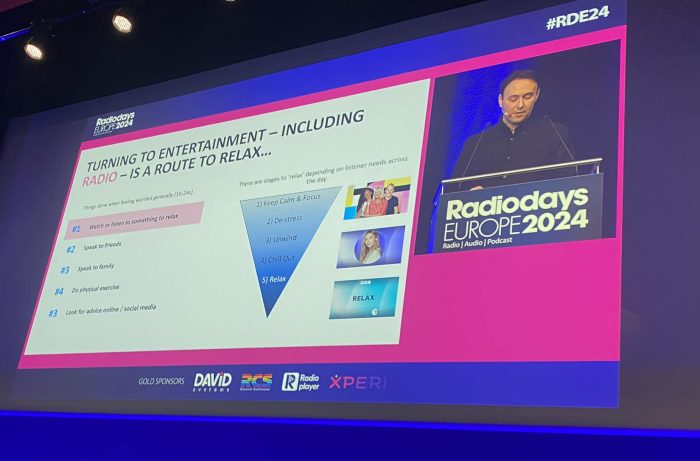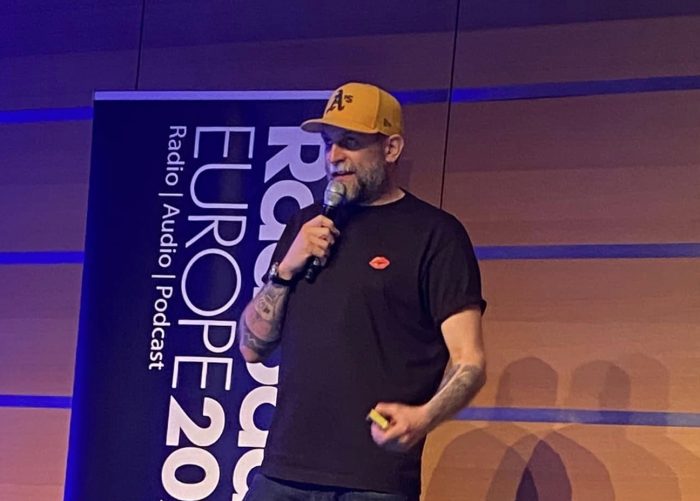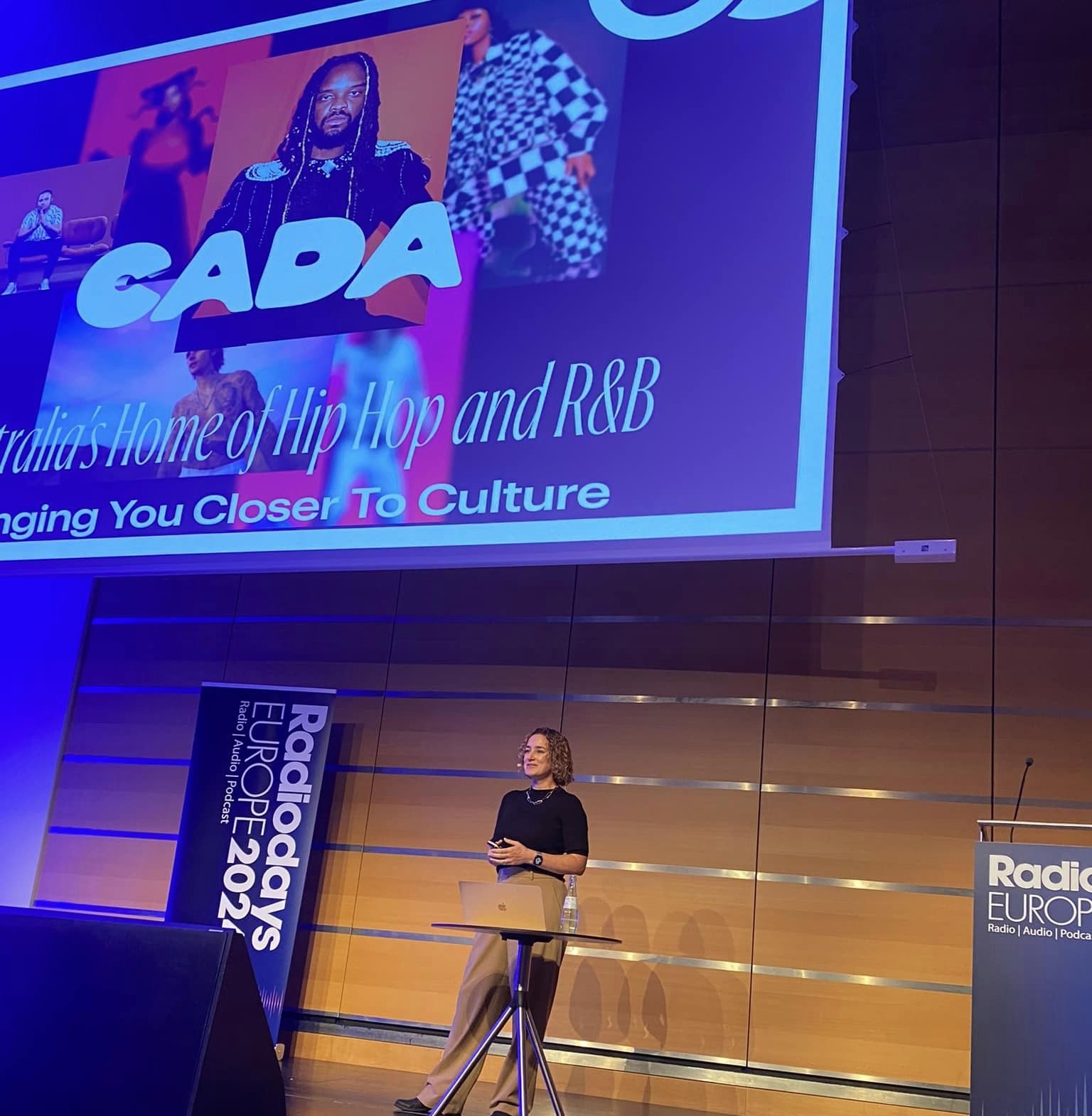2024’s Radiodays Europe conference started its final day with sessions addressing bringing youth back to radio as listeners and presenters. Familiar to Australians, Emily Copeland, the former General Manager of CADA, hosted a session called Revolutionising the Search for Radio Talent with German program director of 98.8 Kiss FM York Strempel. This was followed by Head of BBC radio 1 Aled Haydn Jones and What Gen Z Want From Radio.
Emily Copeland had some statistics she’d gathered prior to the launch of CADA almost exactly two years ago. They were that Gen Z:
- Felt overlooked by mainstream media
- Are always searching for content
- Dislike ads but don’t hate advertising
- Enjoy live radio and participation
- Trust certain content creators more than traditional media
- and, fascinatingly, can find commercial radio anxiety inducing

Aled Haydn Jones
Aled Haydn Jones said from the outset of his session that he didn’t have one key answer but that BBC Radio 1’s approach included:
- Reaching out of the bubble, that is increasing the breadth and platforms by which new listeners gave find BBC Radio 1. Jones said the very nature of broadcast is that radio aims to appeal, broadly, to as many people as possible. But the more broad the BBC became, the more 15-24 year olds were turning off.
- Know the strength of what live radio can give you, BBC Radio 1 decided not to let presenters use the generic BBC social accounts but rather build their own via also incorporating and tagging the singers/actors and other stars the on air presenters interview or have performing. Leveraging fan bases has worked well, as has connecting an experience to an event. An example was fans lining up at a music festival at the BBC Radio 1 photo booth to get a picture with musical stars. The image, QR code to access it and the promotion around it all featured the station.
- Hearing themselves reflected on radio, similar to Emily’s feeling overlooked by mainstream media above, Aled talked about how radio, and the connection to presenters, can provide a guide to how to feel. Queen Elizabeth’s death was the highest listenership day to BBC Radio 1 in 2022. Presenters were able to allow listeners to call and try to describe their feelings, and they did this on radio more than on socials or television.
Interestingly Aled said that part of his research found that Gen Z watch or listen to something to relax, different to Emily’s finding that commercial radio can be anxiety inducing. Perhaps the hatred of ads is the difference between Australian commercial and the BBC.

York Strempel
York Strempel was a passionate ball of energy which is reflected in the staff he employs and the creativity allowed on Kiss. He played us audio of a deep voiced male presenter who was his “mystery” host. I and the audience thought it was an AI creation. He then showed us a picture of a baby faced 15 year old called Eddie who was the producer of the Morgan Freeman-esque audio. This shy young man had interned at Kiss and York had meet him in a meeting where, as he put it, “his brain couldn’t comprehend the boy and that voice together“. But he took a chance on him, and others, because he saw something in their energy, voice, humour or social presence.
His message to the audience was:
“Radio is becoming for parents and grandparents. We need to invite youth to come back to radio. Find them. Get them. Train them. Celebrate their talents. Make them stars.”
To establish CADA Emily used techniques that aren’t a normal part of radio culture.
- CADA sought out content creators who had a social media presence and following. They did not have to have a radio background.
- Advertising was integrated into content and had to be cohesive with the presenters, many of whom view themselves as a “brand”, not an individual. This also allowed a selling opportunity for a brand to be integrated into the CADA culture
- The cast of CADA was 60% female and 80% non-anglo.
- There is a video and radio studio. Presenters were able to have flexible hours and contracts with Flex and Froomes only able to record together one day a week but, for every one hour they recorded, three hours of content could be created.
- And, most counterintuitive, the talent’s contracts were flexible too so that existing brand relationships, and future ones, could be integrated into their on air role with CADA, or not.
The last creative idea, which Aled joked seemed “ridiculous” at the time, was that four years ago BBC Radio 1 created Presenter Uploader. Over Christmas and New Years, when the regular presenters took their breaks, young people were invited to send in an aircheck to take over hosting the station. More than 1500 entries were received. 30 were chosen. Over the three years since 120 new presenters got a change to skip through agencies and hierarchies to create their own show on BBC Radio 1 and a great many of them continue to do so within the BBC.
I’ll leave the last word with York who said:
“Please give young talent a chance. When you offer them responsibility, they will perform.”

